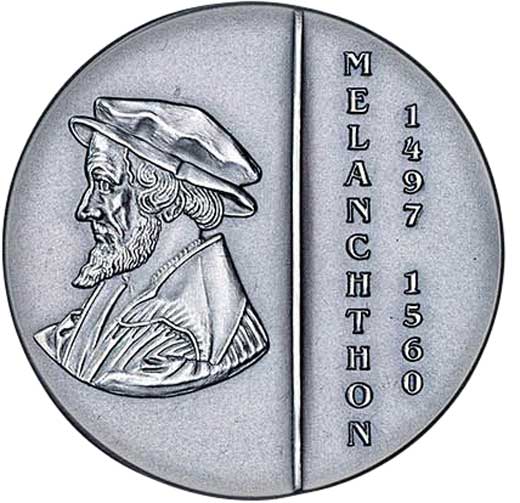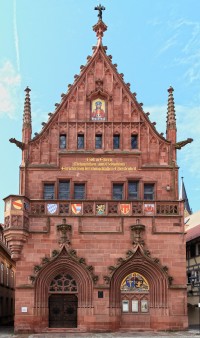Vorderseite: Längs geteiltes Feld: links Brustbild Melanchthons nach links im Humanistentalar mit Barett, rechts die Aufschrift MELANCHTHON und die Jahreszahlen 1497 und 1560 absteigend.
Rückseite: Längs geteiltes Feld: links die eherne Schlange als Wappen Melanchthons, rechts in acht Zeilen ER / SCHAUTE / AUF ZUR / EHERNEN / SCHLANGE, / SO BLIEB / ER AM / LEBEN, darunter Num 21,4-9 / Joh 3,14 f. Rand: NOBLE HOUSE 999-51 (Feingehaltsangabe)
Herausgeber: Europäische Melanchthon-Akademie; Hersteller: Noble House, Hilpoltstein.
en

